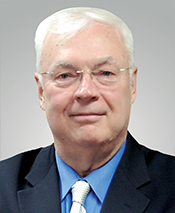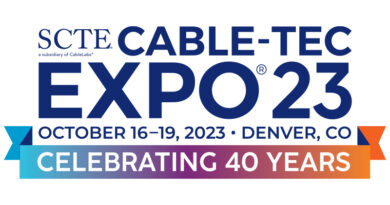Be It Ever So Humble
By Mark Dzuban
There’s no place like home, my friend Scott and I were saying not long ago.
Scott’s an architect whom I’ve known since my days as a field engineer for Clear Cable in Toms River, NJ. He’d lost a leg to a drunk driver while in college and has known firsthand the challenges of adapting his surroundings so that he could live functionally and productively.
Scott and I were discussing the importance of meeting the needs of individuals who are approaching or in their retirement years and want to stay in the familiar surroundings of their residences. He was taking an architect’s eye toward the structural modifications that would be required; I had a view of how our industry could provide critical telecommunications capabilities that would support aging in place. As we talked, we envisioned a converged future that would enable:
• Interactive communication of the condition, well-being and location of any individual who might require oversight;
• The ability of the medical community to deliver a new range of in-home services that previously would have required costly and time-consuming trips to specialized inpatient or outpatient facilities;
• Environments that offer home-bound — and even immobile — individuals a complete range of services needed to sustain care, including devices for the delivery of critical treatments, cameras and monitors — all linked via wired connections or via Wi-Fi hubs that are strategically located to optimize connectivity and responsiveness;
• Remote monitoring of house systems, food storage temperatures and pipes;
• Remote and in-house alarms when systems indicate an area of concern; and
• Communications among housebound individuals and caregivers, relatives, neighbors and other supporters.
Cable’s coming launch of 10G technologies is opening the door to the incredible range of services I’ve just described. Interactive video consultations, virtual nurses’ aides, social interaction that feeds the soul — all at high speed with the low latency, high reliability and high security that such essential services require.
At SCTE•ISBE Cable-Tec Expo we’re providing glimpses of this future. In addition to a pre-conference event and other sessions on 10G, we’ll be showing how we can collaborate with organizations like US Ignite, the Smart Cities Council and the Continental Automated Buildings Association (CABA) to drive Smart Home and Smart Cities initiatives. And we’ll feature workshop sessions dedicated to maximizing the value of IoT devices.
To expedite the availability of aging in place services, however, we need to confront this current reality: Architects design according to building codes, and building codes inherently are intended to ensure the safety of the structure. For individuals in specific circumstances — i.e, the wheelchair-bound — there are modifications that are made to door widths, switch and thermostat heights, closets and other features. As of now, however, there are no codes or recommended practices that indicate how technology can or should be designed into a building to support the needs of the elderly, and no resource that the architectural community can tap to see into the technological future. As a result, creation of a functional, smart home environment can easily miss the target.
Scott’s a case in point. Not too many years ago, his firm’s residential and commercial clients were requesting installation of Cat5 cabling to accommodate multiple broadband access points. With the emergence of Wi-Fi, many of those cables and jacks now sit unused. Meanwhile, on a personal level, Scott has known only dead-zone frustration in his quest to bring Wi-Fi services to an office in the far reaches of his home.
As we move into the IoT and Smart Home eras, architects and builders have an opportunity to create forward looking designs that optimize the benefits of communications technology, but they need to understand how tech works and obstacles to implementation. What is the ideal location for a broadband gateway? What are the optimal locations for wireless access points and sensors and what kinds of obstacles are presented by structural elements and materials? How can technologies on the horizon eliminate or minimize those concerns?
The opportunity for our industry — and for SCTE•ISBE as an ANSI-accredited organization — is to provide the resources that can help the architectural and construction communities make and implement those design decisions. Our industry should take a leadership role in shaping the development of standards and best practices that can make aging in place — within the comfortable environment of their own home — a practical reality for those entering or in their golden years.
 Mark L. Dzuban
Mark L. Dzuban
President/CEO, SCTE
mdzuban@scte.org
As President and CEO of SCTE•ISBE, Mark Dzuban is continuing a lengthy career of telecommunications leadership. Mark has been instrumental in positioning SCTE•ISBE as a leader in energy management and technical education, driving creation of the Energy 2020 program, the CORTEX Expert Development System™ and other programs and services that build value for the cable system operators, technology partners and individual members. Mark was honored with the prestigious NCTA Vanguard Award in 2011.
Editorial credit: / Shutterstock.com



